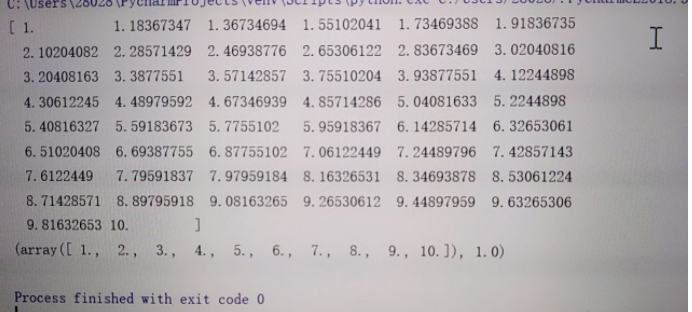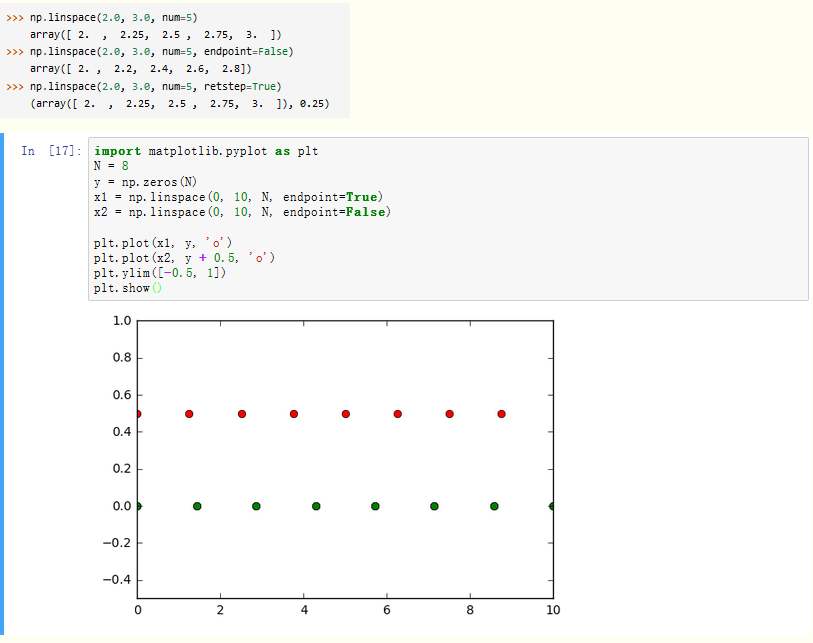import numpy as np
x=np.linspace(1,10)
y=np.linspace(1,10,num=10,retstep=True)#num可省略
print(x)
print (y)

由结果可得,一般linspace生成含有50个数的等间隔数列,前两个参数是数列开始和结尾,第三个是数列中元素个数。retstep输出一个元组,元组的分别是生成的数列和数列的等间隔数值。
print(np.linspace(150,180,80)) 等价于 print(np.linspace(150,180,num=80))
np.linspace主要用来创建等差数列。
numpy.linspace(start, stop, num=50, endpoint=True, retstep=False, dtype=None, axis=0)
Return evenly spaced numbers over a specified interval.
(在start和stop之间返回均匀间隔的数据)
Returns num evenly spaced samples, calculated over the interval [start, stop].
(返回的是 [start, stop]之间的均匀分布)
The endpoint of the interval can optionally be excluded.
Changed in version 1.16.0: Non-scalar start and stop are now supported.
(可以选择是否排除间隔的终点)
参数含义:
start:队列的开始值
stop:队列的结束值。当'endpoint = False'时,不包含该点。
num:要生成的样本数。默认是50。
endpoint(bool型):如果是True,'stop'是最后样本。否则不包含'stop'。
retstep(bool型):如果是True,返回('samples', 'step')
返回值:
samples(ndarray型):闭区间[start, stop]或者是半开区间[start, stop)中有num个等间距样本。
step(float型):仅当'retstep = True'时返回。样本间距大小
start:返回样本数据开始点
stop:返回样本数据结束点
num:生成的样本数据量,默认为50
endpoint:True则包含stop;False则不包含stop
retstep:If True, return (samples, step), where step is the spacing between samples.(即如果为True则结果会给出数据间隔)
dtype:输出数组类型
axis:0(默认)或-1
示例:
>>> np.linspace(2.0, 3.0, num=5)
array([ 2. , 2.25, 2.5 , 2.75, 3. ])
>>> np.linspace(2.0, 3.0, num=5, endpoint=False)
array([ 2. , 2.2, 2.4, 2.6, 2.8])
>>> np.linspace(2.0, 3.0, num=5, retstep=True)
(array([ 2. , 2.25, 2.5 , 2.75, 3. ]), 0.25)
原文链接:https://blog.csdn.net/Asher117/article/details/87855493
